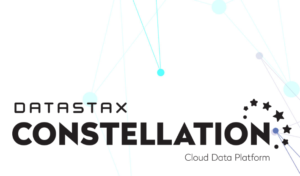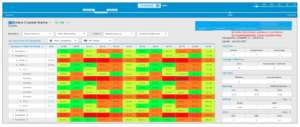
DataStax Unveils Constellation, Its Cassandra Cloud Platform

DataStax kicked off its inaugural user conference this morning by announcing an infrastructure as a service (IaaS) version of the Apache Cassandra database. Dubbed Constellation, the offering will enable customers to get up and running with managed Cassandra deployments for hybrid and multi-cloud environments in just a few clicks.
Cassandra is no stranger to the cloud. Thousands of organizations run the NoSQL database in public and private cloud environments. And about 60% of DataStax’s enterprise customers already run their Cassandra instances in the cloud, the company says.
But Constellation is different because DataStax will be responsible for managing Cassandra for the customer, which dramatically simplifies the whole Cassandra ownership experience, says DataStax CEO Billy Bosworth.
“The point of all this is to make it very easy to develop and deploy these Cassandra-based applications in a cloud-native way,” Bosworth tells Datanami. “It’s just point and click to get started.”
Cassandra arguably is the most scalable distributed database on the planet. If your application needs to read and write petabytes of data in a global, fault-tolerant manner, Cassandra has been a good option for the past decade.
But Cassandra’s Achilles’ Heel always has been complexity in the setup and configuration. By standardizing the Cassandra deployment on the cloud and managing the database as a service, Datastax is able to eliminate much of that complexity without compromising on the power and scalability, Bosworth says.
“Scale is our advantage. That’s our competitive differentiator with our architecture. We’re not going to lose that,” he says. “It’s just in our cloud, you’re going to have it without all of the operational side of the fence. We’re going to do that part for you.”
There are two main factors that go into Cassandra simplification. First, DataStax has chosen configuration settings that will work well for the majority of use cases. Bosworth likens this to how professional cameras today offer many different configuration options, but also offer a “ready to shoot” mode, such as Canon’s “green zone.”
“This is going to be good for 90% of your shots,” he says. “It’s going to be beautiful. And for those that you want to tweak and play, you tweak and play. That’s kind of the approach you take when you look at a cloud offering.”
The other factor at play in Constellation’s simplification of Cassandra is that DataStax knows exactly what the underlying hardware is when it runs in the cloud.
“We don’t have to try and give you 100 options because we don’t know what your environment is going to look like,” Bosworth says. “In the cloud world… we now know exactly what the backend infrastructure is. We don’t have to guess.”
Constellation, which is slated to be available in October, will support multi-cloud and hybrid deployments that include on-prem and cloud environments. The offering will eventually support all three public clouds, including Microsoft Azure, Google Cloud, and Amazon Web Services.
The company also used its conference to announce that DataStax Enterprise (its version of Apache Cassandra) is moving to cloud marketplaces. DataStax Enterprise is already offered in Azure, and will soon be available in Google Cloud. The company is still working with AWS to determine what the backend infrastructure will look like for this offering.
“This is ‘You’re a customer, you’re on their cloud, you search the marketplace, you find DataStax, we deploy it for you. You’re billed through their system. It’s easy and it’s good to get started.'”
Selling DataStax Enterprise on the cloud marketplaces is an intermediate but necessary step to delivering Constellation, which is DataStax’s fully managed cloud platform for Cassandra, Bosworth says. Looking forward, DataStax plans to build on its cloud platform.
Constellation includes two main products, including the Cassandra database as a service offering discussed above, and a monitoring solution called DataStax Insight. Insight will help customers track their Cassandra as a service implementations, and make any tweaks to ensure that it’s working optimally for them, Bosworth says.
“It’s going to give you very keen insights into what’s happening in database cluster,” he says. “We roll things up into intuitive things called health indexes, so you don’t have to look at 200 metrics to try and figure out if the system is healthy. We do that based on our algorithms that we deployed over the years. It’s also driven by machine learning under the cover, so you get the advantage of all the learning we’re going to be doing across all of our managed instances.”
Insight will be available for cloud and on-premise workloads, which will help customers manage hybrid environments that span cloud and on-prem deployments, Bosworth says. “So from single pain of glass you’re going to be able to get really insightful recommendations on your clusters, whether they’re running on prem or in the clouds, which is a nice hybrid model right out of the gate.”
Constellation will be sold in 500GB increments called capacity units. Customers will need to determine what sized cloud infrastructure they want to run on Azure, Google Cloud, and AWS (pricing was not disclosed). Beyond that, any configurations are handled by DataStax, not the customer.
“You simply think about how much capacity do you need, how much data do you need, and then how many transaction per seconds do you need,” Bosworth says. “Then you make determination on do you want something in one region or something in another region. But you won’t be concerned in this model with the ‘nodes’ like you used to be concerned if you were managing your own environment.”
DataStax’s Accelerate conference is taking place this week in Washington D.C. You can watch a livestream of the event here.
Related Items:
DataStax Helps Deliver ‘Always-On’ Health Advice
A Peek Inside DataStax’s New Cloud Strategy
DataStax Puts Big Database in Google’s Cloud
































